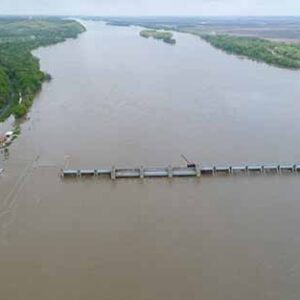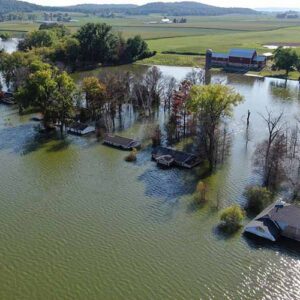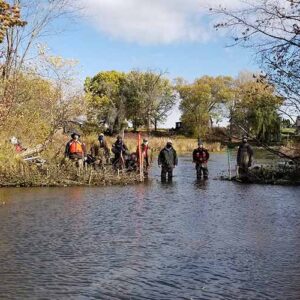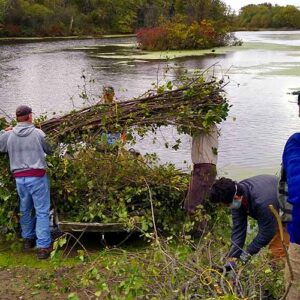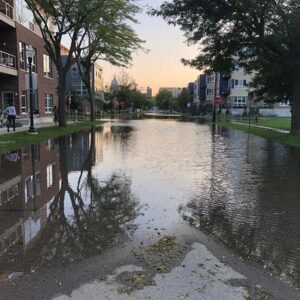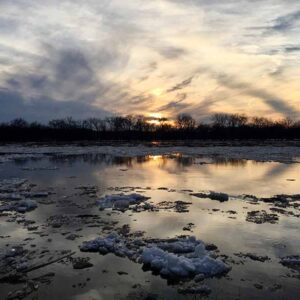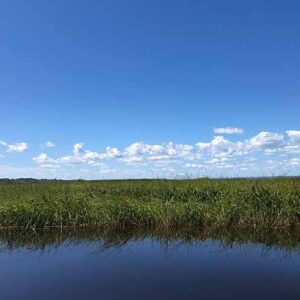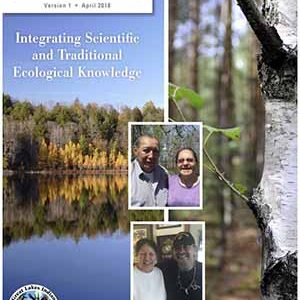The WICCI Water Resources Working Group assesses and synthesizes climate change impacts to Wisconsin’s water resources and assists in the development of adaptation strategies for dealing with those impacts. The group focuses on inland waters, including lakes, reservoirs, streams, rivers, wetlands, and groundwater.
Summary of Issues and Impacts
Rising air temperatures, more precipitation from fall to spring, and more frequent and larger extreme precipitation events affect Wisconsin’s lakes, streams, groundwater and wetlands.
Water Temperatures on Lakes Are Warming in Concert with Air Temperatures
Ice cover duration is shorter, surface waters are warmer in spring and fall, and warm summers occur more frequently, but maximum summer surface temperatures are not increasing. Bottom temperatures are warming in some lakes and cooling in others. Stratification is stronger and occurs for a longer period of time.
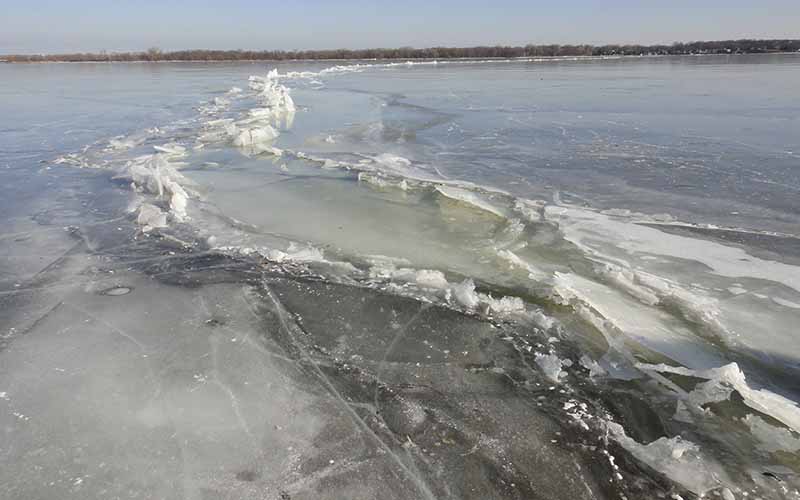
Warmer Water Temperatures Impact Water Quality, Aquatic Life, and Culture
Examples of impacts include: loss of winter recreational opportunities on ice, increased risk of winter drownings, reduced dissolved oxygen, reduced cold-water habitat for fish, increased internal phosphorus loading, more harmful algal blooms, shifts in fish distributions to warm water species, and changes in suitability for aquatic invasive species.
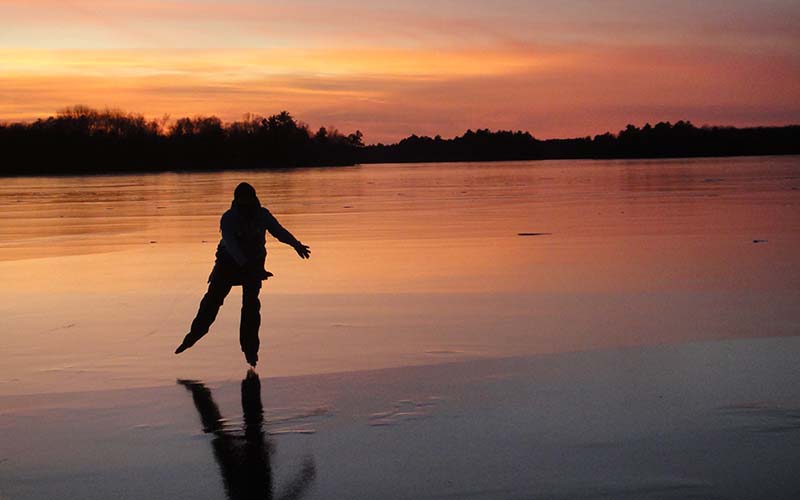
Changing Precipitation Patterns and Evapotranspiration Affect Water Levels
Groundwater and lake levels often go up and down on an approximate decadal cycle. Lows occur after an accumulation of years with low precipitation and highs after many years of above-average precipitation. Changing precipitation patterns with changing temperatures could shift the balance between precipitation and evaporation, causing water levels to fluctuate at higher or lower levels than they have in the past. Greater climatic extremes may also cause water levels to fluctuate more dramatically.
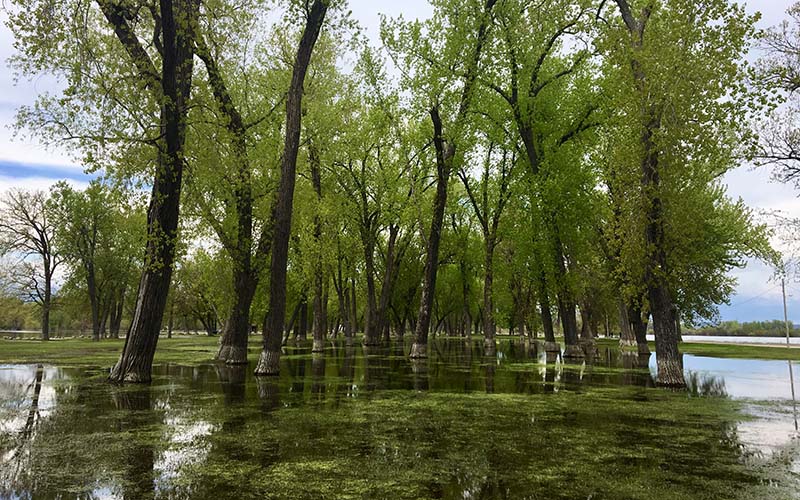
More Extreme Precipitation Results in Flooding, Water Quality, and Health Problems
Groundwater, stream, and lake flooding pose risks to human health by compromising septic and sewage systems and contaminating drinking wells. Floods also increase contaminant transport, harm infrastructure and shoreland vegetation, increase erosion and runoff, and reduce water quality.
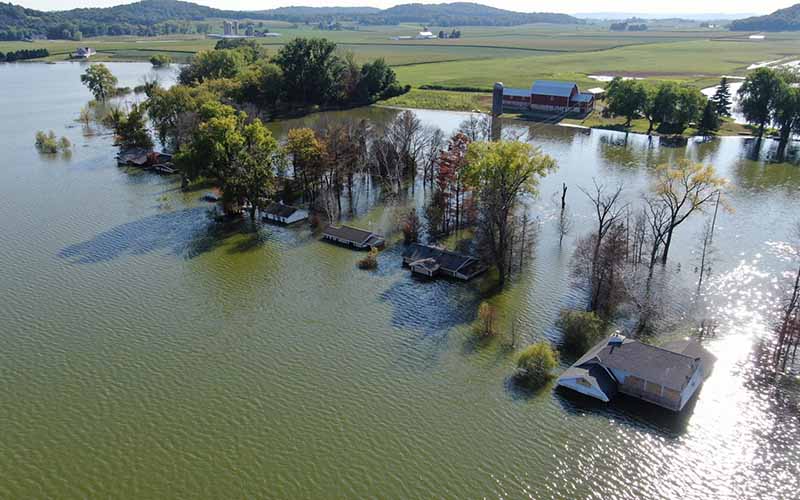
Drought Impacts Water Quantity and Quality
Despite more precipitation, drought remains a threat due to increasing temperatures. Longer growing seasons increase evapotranspiration and reduce groundwater recharge. Drought also reduces surface water volume and sometimes completely dries drinking water wells and surface water bodies. Drought can warm surface waters by reducing overall volume and the contribution from cooler groundwater. It also affects water quality and decreases dissolved oxygen in some surface waters.
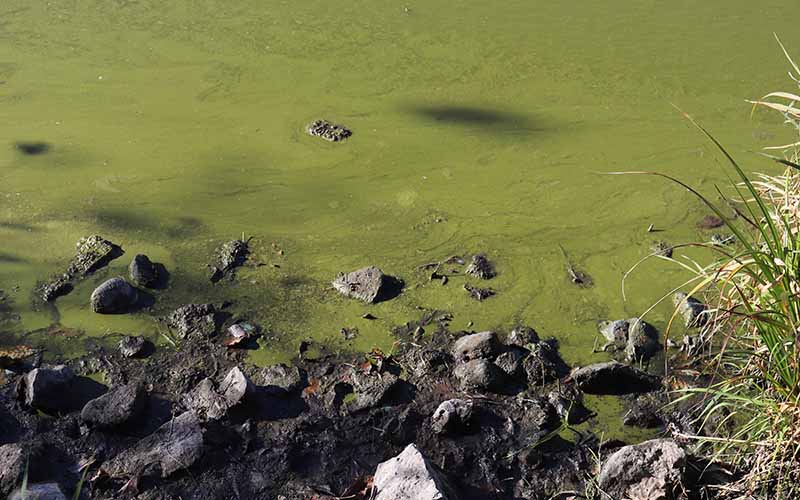
Recommended Solutions/Strategies
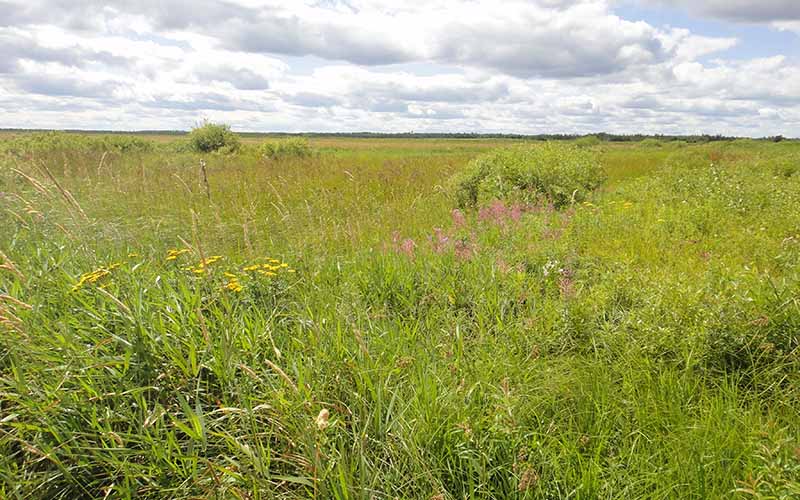
A wide variety of adaptation strategies are already being employed as part of typical water quality management activities, but the urgency and magnitude of these activities is enhanced by climate change. Some strategies resist change, others make Wisconsin waters more resilient in the face of change, and others accept and even help advance change.
Actions to protect and restore habitat and enhance water quality will make Wisconsin’s waters more resilient to warming and minimize impacts. A combination of conservation strategies, like wetland protection and restoration, and engineering solutions, like green infrastructure, can minimize flooding caused by extreme precipitation events. Please see the resources section for comprehensive lists of climate solutions.
- Develop water resource climate adaptation menus for water resource managers, local government, and other organizations
- Establish a long-term water monitoring network
- Establish a Wisconsin Surface Water Applied Research Program
- Protect and restore lake and river shoreland areas, floodplains, wetlands, and groundwater recharge areas
- Alter land management practices to reduce runoff and nutrient and contaminant loading
- Enhance water storage and employ practices to minimize stormflow
- Implement strategies to prevent groundwater contamination
- Conserve water
- Prevent the spread of aquatic invasive species
- Tailor management plans for fish and other species of interest to climate change
- Educate the public and develop policies on ice safety
Environmental and Climate Justice Issues
Environmental and climate justice concerns stem from heightened flood and groundwater risks.
Flood Risk
Increased precipitation and extreme rain events flood homes, septic, and sewage systems and contaminate drinking water, impacting human health and financial well-being. Families in flood-prone areas who do not have the financial resources to mitigate or recover quickly from these events are especially at risk. The Water Resources Working Group calls for planned buyouts, which purchase private lands at risk of flooding and put them to public use. This would provide some protection from the financial and health harms caused by flooding and also provide public access to lakes and waterways, creating more equitable access to recreational opportunities.
Groundwater Risk
During periods of low groundwater levels, shallow drinking wells may become partially or completely dried, impacting water quality and damaging the well systems themselves. Those living in regions with vulnerable groundwater reserves and lacking the financial resources to respond will be disproportionately impacted by these climate change effects.
Stories
Resources
The Water Resources Working Group white papers summarize the latest information regarding the impacts of warming and changing precipitation patterns on water resources and offer a wide variety of adaptation strategies.
- Impacts of and Adaptation Strategies for Climate Change on Wisconsin’s Water Resources (Water Resources White Paper)
- Climate Adaptation Strategies for Wisconsin’s Water Resources (developed for WICCI Report to the Governor’s Task Force on Climate Change)
- Long-term epilimnetic temperature trends in Lake Mendota and Trout Lake, Wisconsin
- Response in the water level of Anvil Lake, Wisconsin, to changes in meteorological and climatic conditions
- Flooding in two southern Wisconsin closed-basin lakes: adapting with a siphon pipe at Devil’s Lake and living with the new normal at Fish Lake
- Mississippi River Climate Change: Status, Challenges and Adaptations
We also encourage readers to revisit the 2011 WICCI assessment report for a comprehensive review of climate change impacts to water resources as the material in the 2011 report is still relevant.
This is an accordion element with a series of buttons that open and close related content panels.
Websites
Global Climate Change Impacts in the United States 2009 Report
EPA Addressing Climate Change in the Water Sector
EPA Climate Change Indicators: Ecosystems
EPA Green Infrastructure for Climate Resiliency
Wisconsin Land and Water Climate and Conservation Webinar Series: Water Resources Climate Impacts and Adaptation Strategies
Data/Planners
Publications
Ashland County Land and Water Resource Management Plan 2020-2029
Development of a Climate Change Vulnerability Map for Bodies of Water in the Midwestern U.S.
Flood Resiliency in the Coon Creek Watershed
More children and youth drownings as warming temperatures create unstable lake ice
Potential Effects of Climate Change on Stream Temperature in the Marengo River Headwaters
Water-Quality Indicators of Human Impacts to the Wetlands of Door County, Wisconsin
Our Team
Stakeholders and Partners
- Wisconsin Department of Natural Resources
- University of Wisconsin Extension
- Northern Institute of Applied Climate Science (NIACS)
Members
- Tim Asplund, Program Manager, Water Quality Assessment, Wisconsin Department of Natural Resources, Tim.Asplund@wisconsin.gov
- Jen Hauxwell, Associate Director, Wisconsin Sea Grant, jennifer.hauxwell@aqua.wisc.edu
- Madeline Magee, Monitoring Program Coordinator, Wisconsin Department of Natural Resources, Madeline.Magee@wisconsin.gov
- Katie Hein, Lake Monitoring Lead, Wisconsin Department of Natural Resources, Catherine.Hein@wisconsin.gov
- Steve Elmore, Program Director, Drinking Water and Groundwater, Wisconsin Department of Natural Resources

